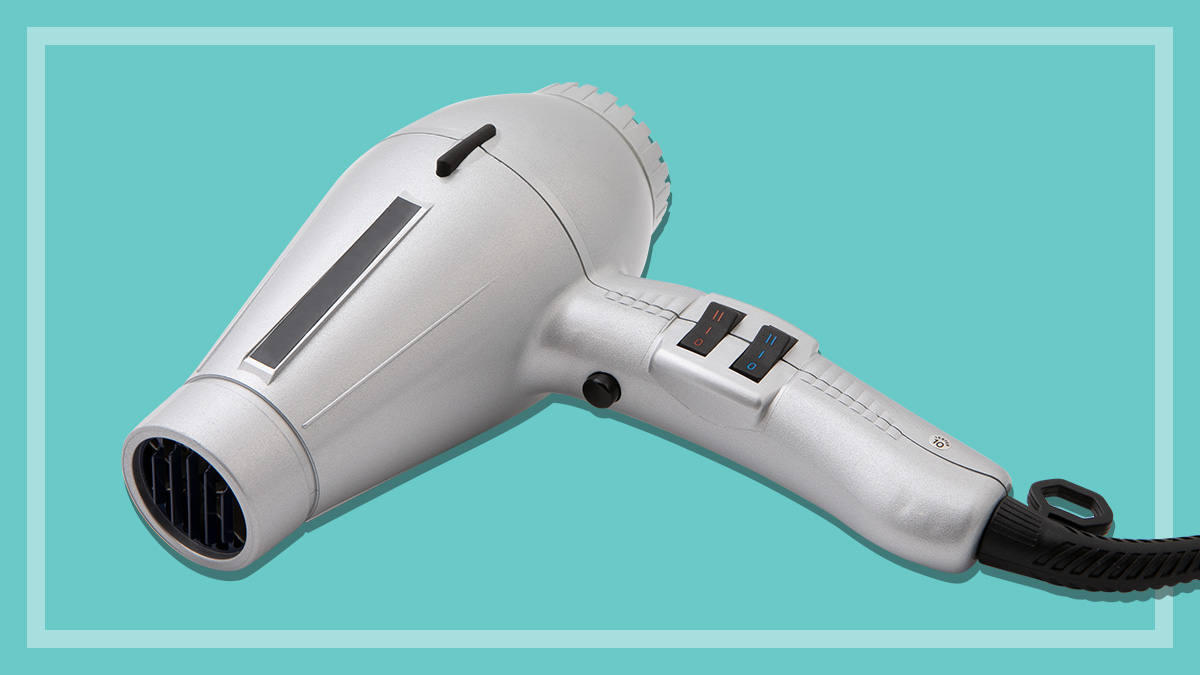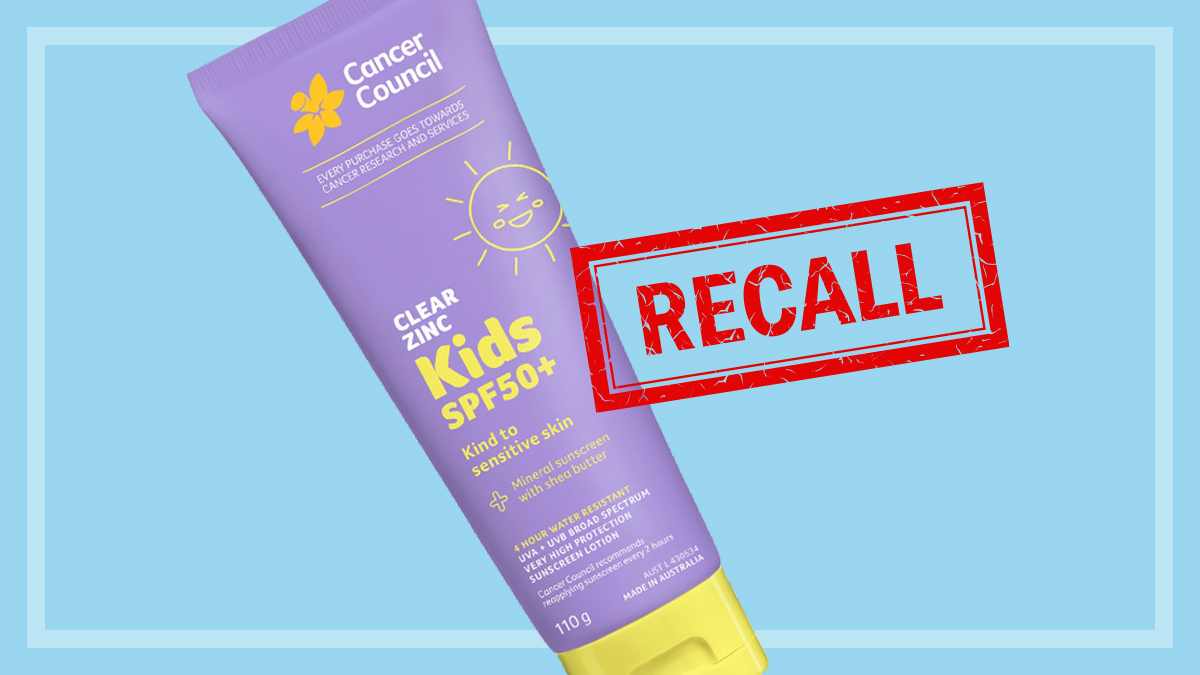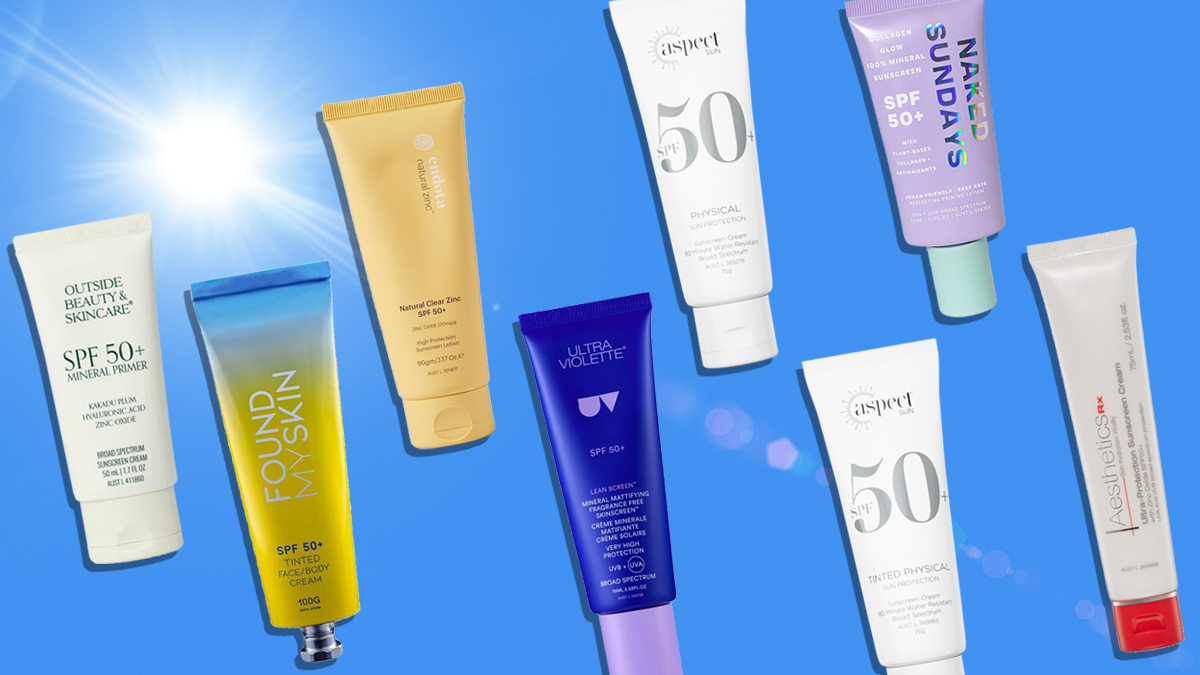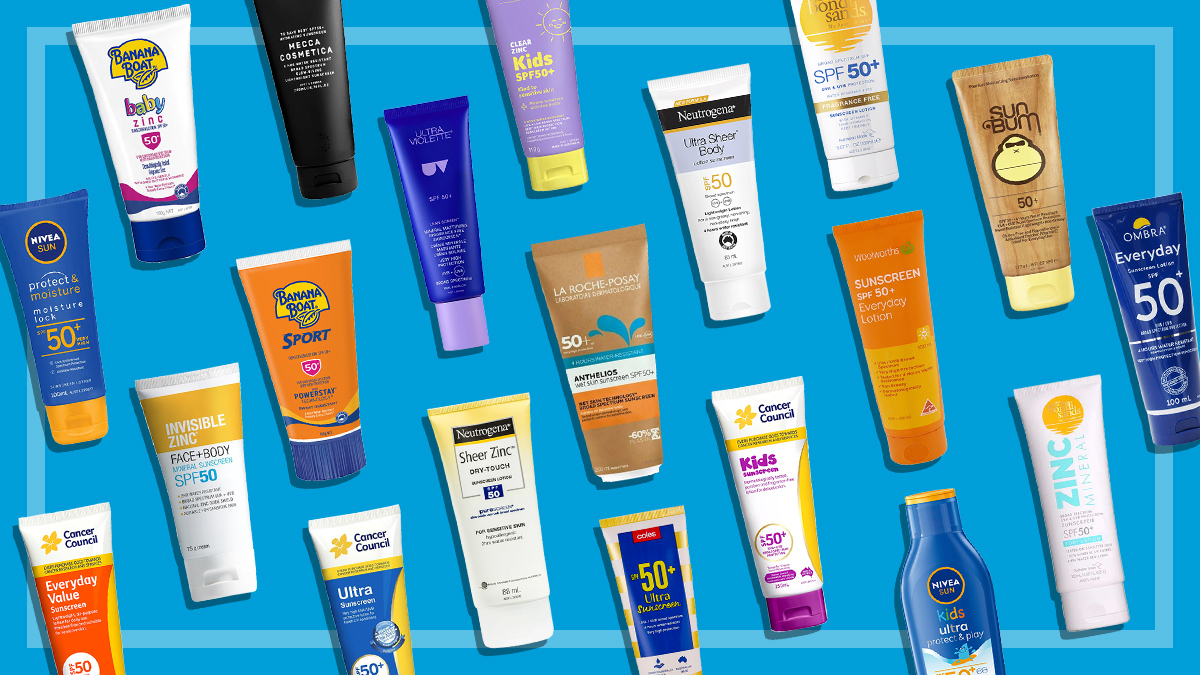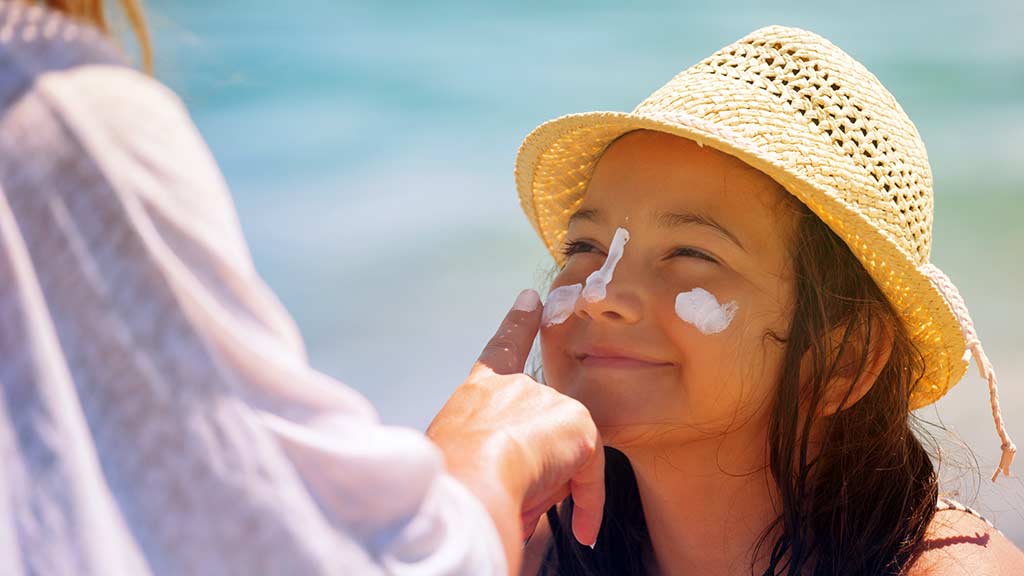Get our independent lab tests, expert reviews and honest advice.
Chemicals in cosmetics
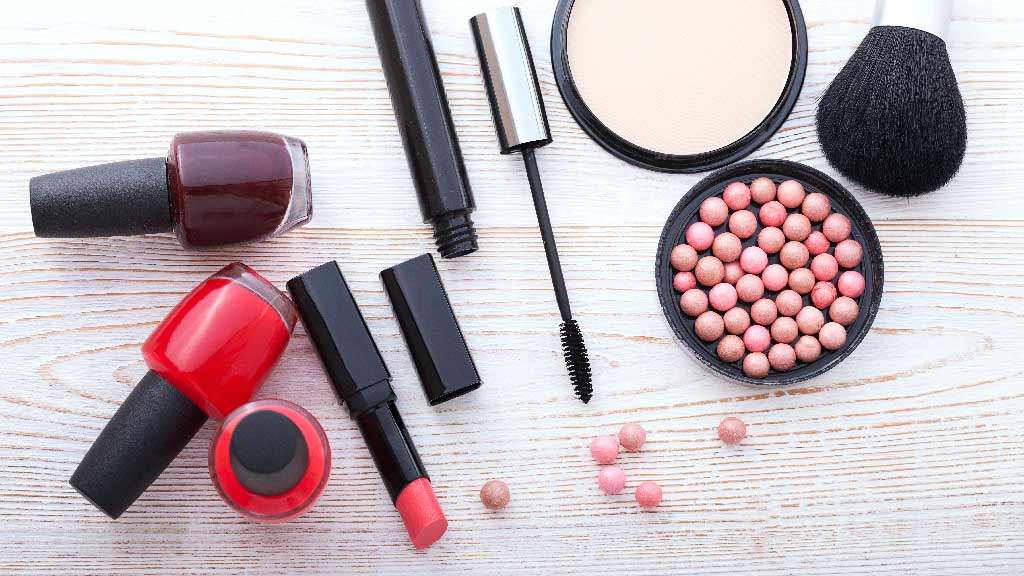
Mineral oil is full of carcinogens! Sodium laureth sulphate is so toxic that full protective gear is required for it to be handled – and it’s in our toothpaste! Propylene glycol penetrates skin and causes liver and kidney abnormalities – and it’s found in shampoo, spray deodorant and … anti-freeze! Talcum powder causes ovarian cancer! Yet all these products are lurking in our bathroom cabinets.
So we find on the interwebs, in media reports and from purveyors of natural and organic cosmetics that many ‘dangerous’ chemicals are found in cosmetics and personal care products, but are apparently considered safe by the authorities that regulate such things.
With certain medical conditions inexplicably on the rise, and emerging research finding dangerous effects from chemicals at low, previously untested levels, it’s no surprise that people are worried. The good news is there’s nothing to worry about when it comes to sodium laureth sulphate, propylene glycol and mineral oil – at least as used in cosmetics.
But what about the claim that talcum powder causes ovarian cancer? Recently the issue hit the headlines when Johnson & Johnson was ordered by the courts in the US to pay $US72 million to the family of a woman who used its baby powder and died of the cancer.
We take a closer look at some of the chemicals ringing alarm bells to see which claims are justified, which aren’t and which ones need more research.
Chemicals of concern
Phthalates
Phthalates are used as plasticisers and solvents, and can be found in fragrances, hair products, skin lotions, nail polish and nail hardeners. They have been found to have endocrine disruption effects, and have been linked with endometriosis and early puberty in girls, and reproductive organ abnormalities and reduced fertility in males. They can also act on the thyroid, and have been linked with obesity.
In light of these concerns, several phthalates have been banned for use in cosmetics in Australia: dibutylphthalate, diethylhexylphthalate, diisobutylphthalate and di(methyloxyhexyl)phthalate.
Parabens
Parabens are preservatives used in many cosmetic and personal care products, with methyl paraben being the most commonly used. In lab testing on animals and tissue culture, parabens have been found to have endocrine disruption effects, although the relevance to humans isn’t well understood.
The European Scientific Committee on Consumer Safety reviewed parabens and determined that while methyl and ethyl paraben are safe to use in cosmetics, subject to concentration limits, five other parabens were banned in cosmetic products – Isopropylparaben, Isobutylparaben, Phenylparaben, Benzylparaben and Pentylparaben. The Association of Southeast Asian Nations’ (ASEAN) Cosmetics Committee recently followed suit.
However, the Danish government has banned the use of some additional parabens – propylparaben and butylparaben – in products marketed for use by children up to three years old as a precautionary measure, as children might be especially vulnerable to endocrine effects.
No parabens have been banned in Australia.
Talcum powder
This link between talcum powder and ovarian cancer was drawn many years ago. The evidence that using talcum powder causes cancer – rather than something else causing the cancer – is not very strong, with some studies finding a small increase in risk of about 20%, and others finding no increase. The main risk factors for ovarian cancers are being overweight, having endometriosis, hormone replacement therapy, smoking and gene mutations.
As part of a response to the court ruling against Johnson & Johnson, Professor Paul Pharoah, Professor of Cancer Epidemiology at the University of Cambridge noted:
“The association is biologically plausible. Talcum powder applied to the genital area might get into the fallopian tubes and onto the ovaries and cause inflammation, which in turn could cause ovarian cancer… [however] it’s important to remember the size of the possible risk – a 20-year-old woman in the UK has a risk of getting ovarian cancer at some point in her life of 18 in a thousand; a 20% increase in this risk would raise this to 22 in a thousand (assuming that the association were real). A woman with a fault in the BRCA1 gene has a lifetime risk of ovarian cancer of about 400 in a thousand.”
Nanoparticles
Titanium dioxide or zinc oxide found in some mineral make-up and sunscreen products may contain particles in the nano range, which have been linked with cellular damage – including damage to DNA – in lab studies. While there’s no convincing evidence they’ll be absorbed into the body when applied to skin, some loose powder mineral make-up products may be inhaled, causing lung problems and potentially being able to travel via the blood stream to other parts of the body where their health impacts are largely unknown at present.
Formaldehyde and formaldehyde donors
Formaldehyde is a preservative that can irritate skin, eyes, nose and the respiratory tract, and can cause cancer among those with high levels of exposure. Small amounts are permitted for use in cosmetics, and it’s mainly found in hair straighteners and nail polish/hardeners. Several years ago high levels of formaldehyde were found in hair straighteners throughout the world, and the ACCC issued recalls for products in Australia. An eyelash glue product was also recalled.
There are also some chemicals that react to release (‘donate’) formaldehyde, including DMDM hydantoin, quaternium-15, diazolidinyl urea and imidazolidinyl urea. People allergic to formaldehyde are often allergic to these formaldehyde donors, and are advised to avoid these chemicals, particularly in leave-on products.
Lead acetate
Hair colour restorers may contain lead acetate. It appears to be safe when used as directed, as there’s no evidence significant quantities of lead are absorbed into the blood stream. Once a common ingredient in products such as Grecian Formula, lead acetate was banned in Europe and Canada and many products have been reformulated with safer but less effective bismuth citrate and silver-based salts.
What about lead in lipstick? Lead occurs naturally in metal pigments used in lipsticks, it isn’t deliberately added. Even assuming that all lipstick that is applied to lips ends up being eaten, the amounts found in lipsticks aren’t high enough to cause concern.
Coal tar
Coal tar is a known carcinogen used in psoriasis and dandruff treatments, and some colouring dyes are also derived from coal tar. Some colourings have been banned in certain cosmetic products in various countries, and have also been banned in soaps and shampoos in Europe and some Asian countries. Shampoos and soaps containing coal tar in Australia are required to carry warning labels and are not recommend for prolonged use.
UV filters
Some chemical sunscreens, including widely used octyl methoxycinnamate (also called OMC or ethylhexyl methoxy cinnamate), as well as 4-methylbenzylidene camphor (4MBC), homosalate and oxybenzone, have been found in some animal and tissue tests to have endocrine disrupting effects. However, it’s unclear whether the amounts of these chemicals penetrating the skin would be enough to have any effect. Nevertheless, government concerns about its effects in children and pregnant women led to 4MBC not being used in products sold in Denmark.
Triclosan
Triclosan is a preservative and antibacterial agent found in personal care products such as antiperspirant, soap, hand wash and toothpaste. Tests on mammals and other animals have shown endocrine disruptor effects. There are also concerns that it may contribute to antibiotic resistance. With no evidence that it has any extra health benefits over soap and water, it may be best to stick to plain old soap and water.
Resorcinol
Resorcinol is used as an antiseptic and disinfectant found in topical treatments for acne, seborrhoeic dermatitis, eczema, psoriasis, corns and warts. It’s also found in hair dyes. It can irritate skin, and has been linked with thyroid dysfunction when used in large quantities on broken skin over a long period of time.
Toluene
Found in some nail polishes, toluene has been linked with short-term neurological effects such as dizziness, euphoria, hallucinations and headaches – it’s what gives a “high” from glue and petrol sniffing. There are also concerns that high concentrations may affect a developing foetus in pregnancy. However, the typical levels of exposure aren’t considered dangerous, although manicurists working in poorly ventilated salons may be susceptible to higher levels of exposure.
Butylated hydroxyanisole (BHA)
Some lipsticks contain the preservative butylated hydroxyanisole (BHA), which is carcinogenic in high doses. It’s also found in food and some medicine, but in the sorts of quantities normally consumed it isn’t considered dangerous.
Better the devil you (kind of) know?
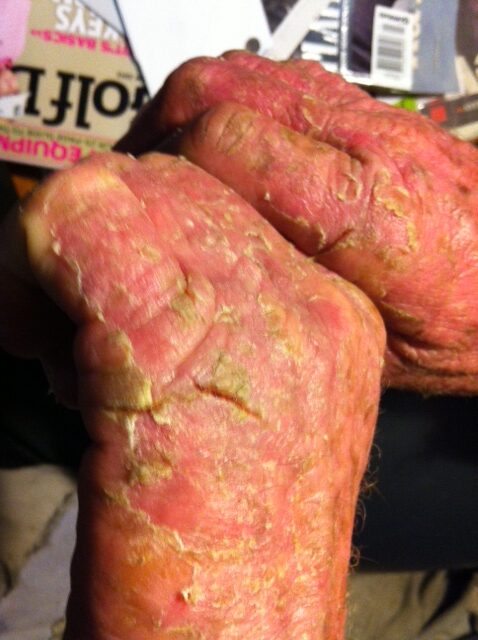
Consumer concern about parabens has driven some manufacturers to use alternative preservatives, with methylisothiazolinone (MI) and methylchloroisothiazolinone (MCI) among them. However, they’re highly allergenic, and dermatologists have noted increasing incidence in allergic contact dermatitis from MI/MCI. It’s found in wet wipes, including baby wipes, deodorants, moisturising lotions, cosmetics, body washes, skin cleansers used in occupational settings and sunscreens.
Dermatologists report seeing parents with dermatitis on their hands from using baby wipes, and it’s possible that some cases of ‘nappy rash’ may have been caused by MI/MCI. These ingredients are banned in leave-on personal care products (such as creams and lotions) sold in Europe, although they’re permitted in wash-off products such as shampoo and shower gels.
If you get a mysterious rash after using personal care products, check the label for these ingredients. A dermatologist can do tests to confirm an allergy.
Who regulates cosmetics?
Cosmetics sold in Australia are regulated by the National Industrial Chemicals Notification and Assessment Scheme (NICNAS), a division of the Department of Health and Ageing. Its role is to assess the safety of chemicals new to Australia as well as existing chemicals, if reason for concern arises.
Anyone importing or manufacturing cosmetic ingredients or products must be registered with NICNAS. Products must comply with certain legislative requirements, including labelling of ingredients, which is overseen by the Australian Competition and Consumer Commission (ACCC).
Below are some of the international regulations and bodies that have a say in cosmetics formulation and regulation overseas:
- The Cosmetic Ingredient Review (CIR), a US-based panel that reviews and assesses cosmetic ingredients and publishes the findings in peer-reviewed scientific literature. It’s supported by the Food and Drug Administration and funded by industry, but has no regulatory clout.
- California has a law, Proposition 65, under which known carcinogens and other dangerous substances must be listed on products containing them, along with a warning label, making them rather unattractive for consumers.
- Cosmetics in Europe must comply with Regulation 1223/2009, which is overseen by a panel of independent experts.
- Health Canada publishes a hotlist of ingredients that are banned or restricted in cosmetics.
- The Ministry of Health and Welfare in Japan has established the Standards for Cosmetics, which lists banned and restricted ingredients.
Australian labelling laws
Cosmetic products in Australia must be labelled with ingredients so consumers can check for allergens or other ingredients they may react to.
The listing must appear either on the product packaging, or on pamphlets or display panels near the product at point of sale. Premium products often come with lots of packaging, so labelling is fairly straightforward. Cheaper products available in supermarkets may be blister-packed in cardboard, which allows room for ingredient information.
In chain department stores such as Target, Kmart and Priceline, where products are sold without additional packaging, you’ll find pamphlets or cards listing ingredients near the products (it’s difficult, as you can imagine, to legibly print all the ingredients onto a tube of lipstick).
In bargain stores and two-dollar shops, you may not find any sort of labelling at all.
Putting it in perspective
Almost all cancers can be attributed to known carcinogens and carcinogenic lifestyles, such as tobacco, alcohol, sun, excessive red and processed meats, lack of fruit and vegetables, obesity, bacteria, viruses and lack of exercise.
Yet with so many people getting cancer these days, not to mention the apparent increase in fertility problems, allergies, attention deficit hyperactivity disorder, chronic fatigue syndrome and other modern-day maladies, it’s not surprising people worry about man-made chemicals in our food, homes and the environment.
Given the ubiquity of their use, it’s easy to blame ingredients in cosmetics. Many substances haven’t been well studied, and there are vested interests on both sides ensuring the message about the safety or danger of chemicals gets maximum – and credible – airplay.
On the upside, we found many of the products from major international brands no longer contain any of the more dubious ingredients. In the globalised marketplace, there’s little sense in producing different formulations for different countries – some with a banned or restricted chemical and others without.
As a result, the once-common dibutyl phthalate, toluene, butylated hydroxyanisole (BHA) and petroleum distillates have all but disappeared from big brand nail polishes, lipsticks and mascaras.
However, beyond these international brands, the findings were less reassuring. As well as supermarkets, department stores and chemists, we looked in ethnic grocers and two-dollar shops and found examples of cosmetics made in Australia, Asia and the Middle East that contain chemicals banned or restricted elsewhere.
Of concern, too, was the number of products without ingredients listed, particularly skin whiteners, henna for tattoos and certain eye make-up products that are sometimes found to contain heavy metals (lead and mercury) or other problem chemicals.
The US-based health and environment advocacy coalition, Campaign for Safe Cosmetics, is lobbying to get the personal care products industry to phase out use of chemicals linked to cancer, birth defects and other serious health concerns, and replace them with safer alternatives – already with some successes.
Should you be worried?
Many chemicals used in personal care products are dangerous in high concentrations, high dose (when administered to laboratory animals) and industrial quantities. Some people may also suffer an allergic reaction to the smaller quantities, such as you’d find in personal care products, and some endocrine disrupting chemicals have an effect at very low doses.
The various websites that warn about chemicals in cosmetics often refer to hazards and warnings in the chemicals’ material safety data sheets (MSDS). Each chemical’s MSDS provides information about its properties, how to handle it, all possible hazards (accidents, prolonged exposure and so on) and how to deal with them. They can be easily found by searching online both the chemical name and MSDS. However, MSDSs aren’t targeted at consumers; they’re relevant for people who work with industrial quantities of concentrated chemicals, not those who use them in diluted and very small quantities.
Many warnings also relate to the effects of large doses of chemicals on lab animals, typically rats and mice, which aren’t a reliable prediction of the effects small doses will have on humans. For example, substances that cause cancer in mice don’t necessarily cause it in rats and vice versa. Human beings also live more complex lives, exposing ourselves to food, lifestyle and environmental factors that may increase or decrease the carcinogenic potential of a given substance. Conversely, substances safe for lab animals may be dangerous for humans.
Are natural cosmetics a better bet?
Some people wary of ‘chemicals’ are drawn to natural cosmetics, assuming they’re safer and better for you. But natural cosmetics may not always be a better choice. For example, many natural ingredients can cause skin reactions and allergies, including lavender, tea tree oil, lanolin, cinnamon (and derivatives), citrus oils and various essential oils. Some, such as lavender and tea tree oils have been linked with hormone disruption in boys.
People can even develop potentially harmful food allergies after being sensitised to ingredients found in cosmetics. There have been reports of people who’ve developed food allergies to goat milk and cheese after using goat milk soap or moisturiser on their skin. Other reports have linked food allergies to skin-care products containing almond oil, peanut, wheat and oats.
Ask the experts
Dermatology and toxicology experts we spoke to agreed that based on current knowledge, cosmetics ingredients in the marketplace are safe to use as directed.
“These chemicals are used in very small quantities and some, like shampoos and so on, for only a very short period of time,” says Dr Rosemary Nixon, from the Australasian College of Dermatologists. “Cosmetic products are defined by their temporary effects and inability to change our body’s physiology. Very little, if any, of the product would be able to penetrate the outer layer of the skin.”
In the future, when these chemicals have been in use for many decades and/or more rigorous studies have been conducted, some long-term detrimental effects may be discovered for ingredients currently accepted as safe.
For now though, in the absence of good evidence of harm, consumers need to decide for themselves whether the benefits of using products containing these ingredients outweigh any potential risks, and whether these risks are greater than the known lifestyle-related risks such as poor diet, lack of physical activity, excessive alcohol, exposure to sun and occupational hazards.
Buying major international brands or at least steering clear of products without an ingredients list, is your best bet if you are concerned.

